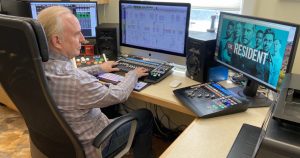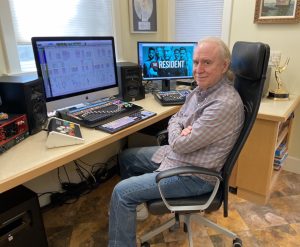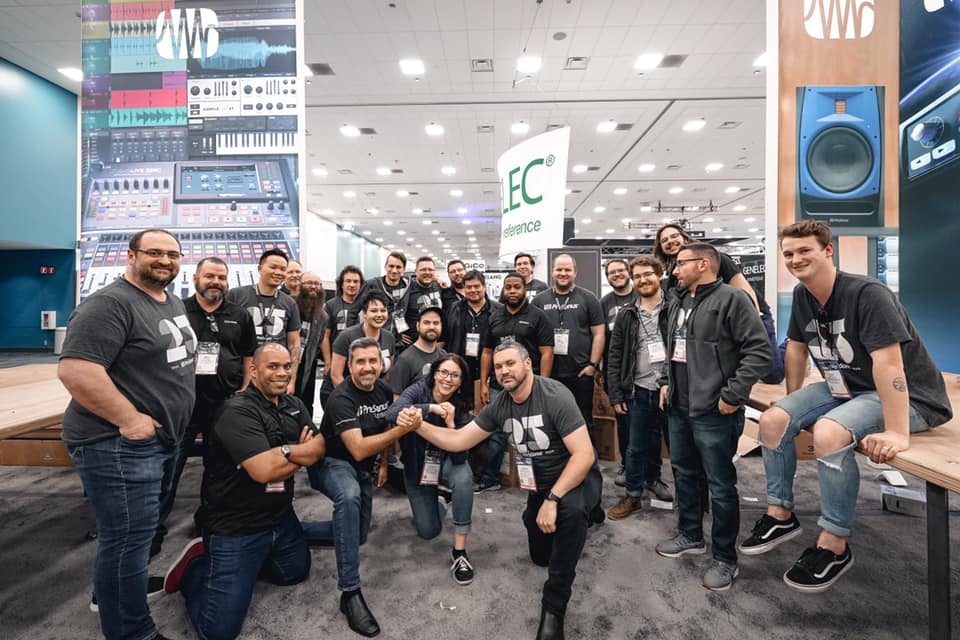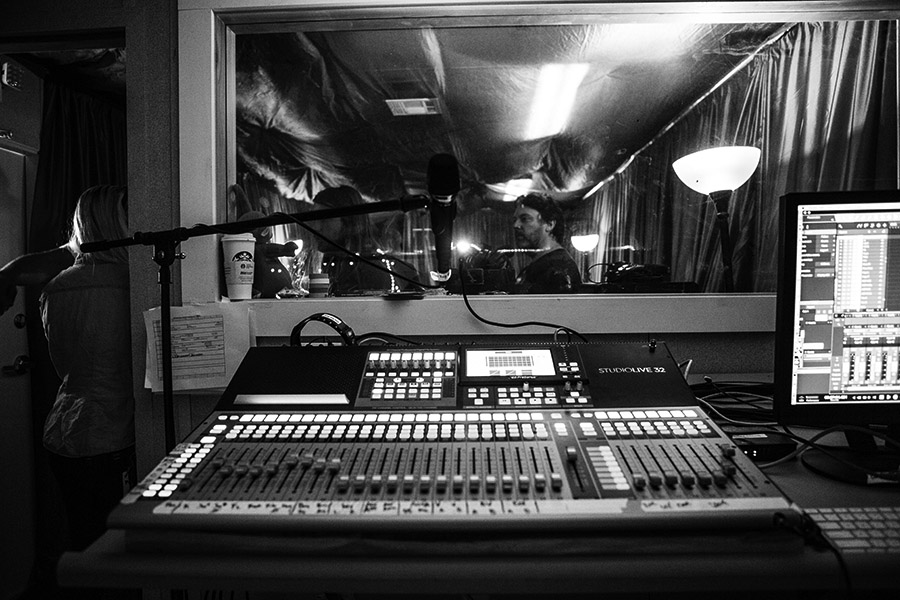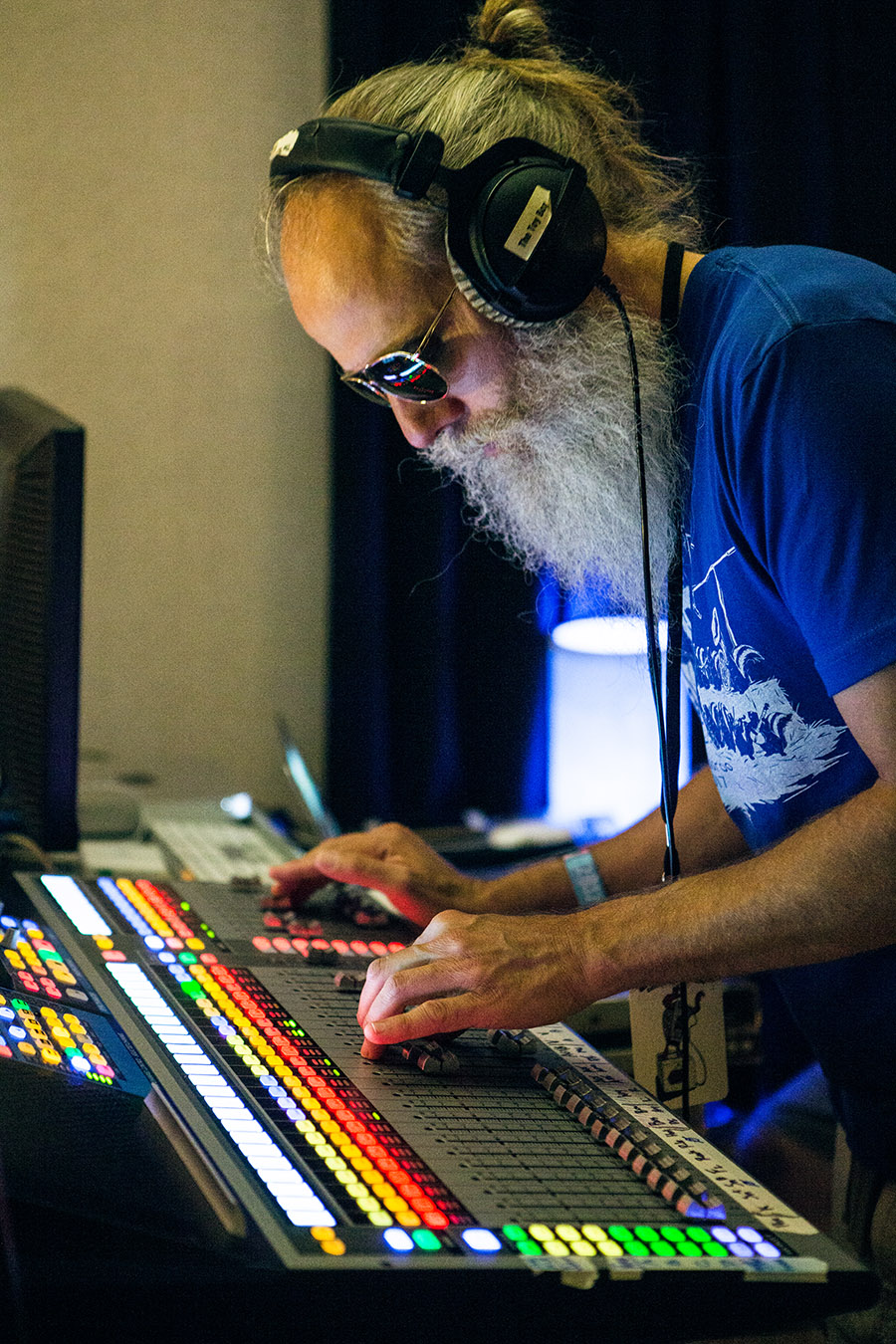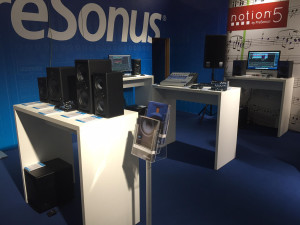Category Archives: User Stories
From Oingo Boingo To The Resident: Bill Jackson Talks Faderports
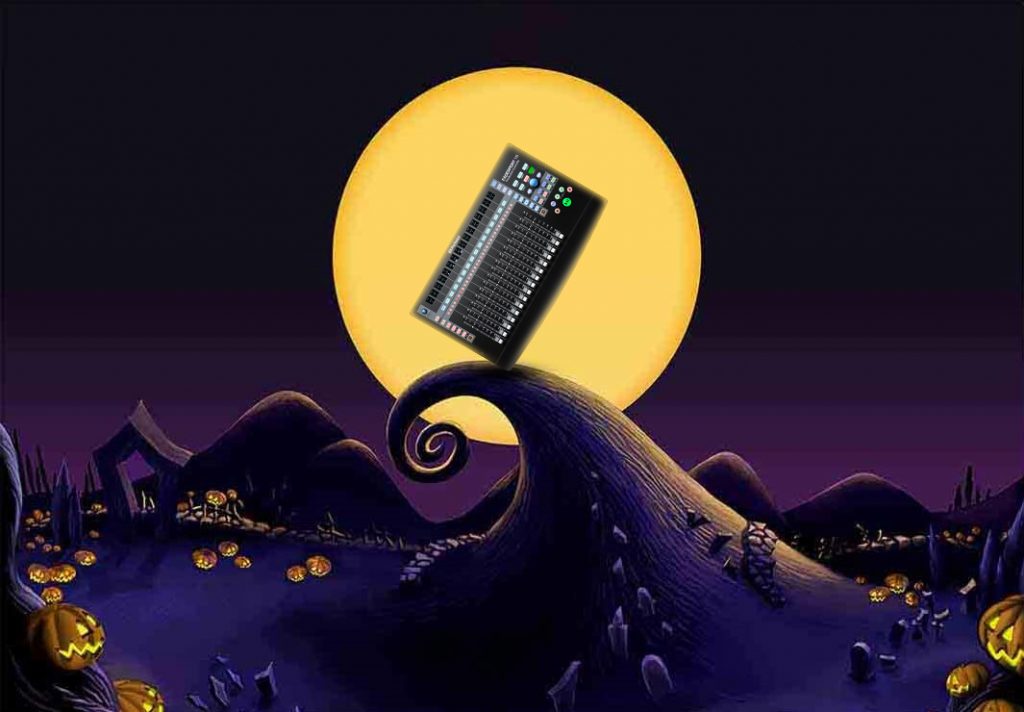 Foreword by Perry Tee (PreSonus Artist Relations Manager):
Foreword by Perry Tee (PreSonus Artist Relations Manager):
2020 has been a year like none other that most of us can remember in our lifetimes. But, we managed to see another Halloween weekend come and go… and true to my own annual tradition, I busted out the Oingo Boingo playlist to honor the songwriting/compositional mastery of Mr. Danny Elfman, along with one of my all-time favorite drummers, Mr. Johnny “Vatos” Hernandez and his quirky approach to propelling all those amazing songs they created in the 80’s.
So, I had the honor of spending time this past NAMM 2020 in Anaheim at our PreSonus Booth with Mr. Bill Jackson, who I discovered was Oingo Boingo’s recording engineer on one of the songs to a hit movie I used to watch ad infinitum back in my youth, Weird Science and all subsequent album releases as well as my go-to end of year holiday film (to this day), Tim Burton’s Nightmare Before Christmas. We spoke at length about how he’s been using our Faderport line of control surfaces to craft his mixing with total human organic interactivity.
Here then, is what he had to say and much more!
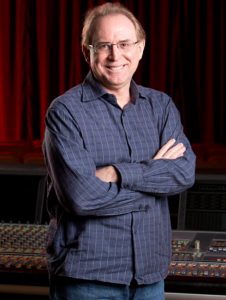 I started working with sound when I was five years old. For Christmas, my parents gave me (what was probably) the first reel-to-reel tape recorder in our town.
I started working with sound when I was five years old. For Christmas, my parents gave me (what was probably) the first reel-to-reel tape recorder in our town.
During college, I played guitar in bands and also recorded them, as well as other local artists, with a Teac A3340-S. I had no EQ on my Tascam mixer, but I had a Tapco spring reverb.
My career started at Sunset Sound in Hollywood. I started as the runner, but I was always going in early and staying late. Sunset has 3 rooms, and I would go to each room, before the session started and look at every mic, then follow the path through the console and all the outboard gear. These were great engineers, working on projects like Van Halen, Doobie Brothers, Toto, etc. Eventually, I was able to hang out during some of the sessions and the clients got to know me. That led to me getting thrown into a lot of sessions, including some for a solid month of engineering for Prince, Sheila E., and The Time.
I randomly was selected to be the assistant engineer on “Weird Science” by Oingo Boingo. When they came back the next week, to record the Dead Man’s Party album, the engineer could not commit to it, so he told Danny Elfman to use me. I recorded every album after that, including the final Live Farewell album.
Danny had also started scoring music for films, and I recorded music for about 12 films with Danny, including recording all of the singing voices for Nightmare Before Christmas.
Around the same time that I started working with Oingo Boingo, I had been recording demos with this producer, Howard Benson. That eventually led to recording and mixing about six major-label albums with Howard, including Bang Tango’s Psycho Café. Howard continues to make records that achieve gold, platinum, and #1 status.
I have probably worked on about 200 albums, in some capacity.
Now, I mix a lot of prime-time network television and a lot of documentaries and have created a space at my house for mixing all of that, as well as recording and mixing albums and singles for independent artists.
So, my PreSonus journey actually started with a music editor, Micha, that I was working with. I noticed that he (and other music editors), would bring in a little box, that sat beside their computer. It had one fader, cool transport control buttons, lots of function buttons and a big blue knob. I asked him about it, and he showed me what it could do. (Music editors, as part of their job, have to present Quicktime mixes to the producers, using the music score from the composer, the way it should sound in the finished mix. This helps the producers decide if they want to keep the music, or make changes to it).
NAMM was just a few weeks away, and by chance, I walked in to the entrance where PreSonus was set up. I was immediately drawn over to what turned out to be an 8-fader version of the single-channel FaderPort that the editors were using. I played around with it and asked a few questions, and when I got home, I ordered one of the first ones available.
What drew me to the FaderPort 8 was the small footprint and low profile. I like having it right in front of my timeline monitor, and it doesn’t block my view, as some new controllers can, and its depth is shallow enough that my monitor can stay completely behind it, but still be close to me. I also loved the price. I don’t think there is anything out there that compares with the FaderPort 8 and FaderPort 16, for the price.
What I like the most about the FaderPort series has to start with the amazing transport controls. Whomever designed this transport is a genius. I am all about minimal movement and conservation of energy. My setup has four monitors, and I divide my movements fairly evenly between my right and left hands.
The tactile feel of the buttons, and the precise layout, which matches where my fingers naturally fall, is awesome. Especially if I am recording overdubs and constantly using the transport controls… I don’t have to move the position of my hand or even look at the controls. It is very ergonomic and natural.
Other features that make my life easier, are the big blue knob that allows me to quickly spin to the next bank of tracks, or move 1 channel at a time. I am always spinning that knob to get the channels that I want to be on the surface. In addition to a Solo Clear button, there is also a Mute Clear button, which will clear the solos and mutes showing on the surface in Pro Tools.
I like that the Audio and Virtual Instrument buttons can be used to switch between the Mix and Edit windows in Pro Tools.
Very convenient are the Latch, Trim, Touch, Write, Off and Read buttons, to change the automation setting of highlighted tracks.
Something that definitely should be mentioned, is that I can choose between Studio One, MCU, HUI, and MIDI Mode, when I set it up to use with my DAW.
I also love that I can adjust the fader sensitivity. I have always had issues with moving faders knowing that I am touching them. The Faderport gives me 7 levels of sensitivity to choose from. Level 6 works perfectly for my fingers.
I can also easily adjust the contrast and brightness of the display to work with my viewing angle.
It comes in handy for recording music, especially how the large Select buttons can become the Arm buttons, in bright red. My average tracking session is about 12-14 tracks of drums and the other live musicians (usually playing along as guide tracks for the drummer). Boingo always recorded that way, with everyone playing live, even if we were only going to keep the drums. I still record like that. It helps the band realize that the tempo and drum parts are right. 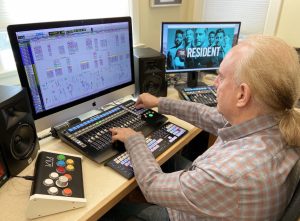
The Faderport 16 especially shines when it comes to mixing for Television. Here’s the workflow/process:
For each episode, my mix tech, Christina, at Sony, sends me the Pro Tools session, which is made from a combination of my template and my FX editor, Mike’s session, and the audio files folder that goes with it. They both have my template, so this is an easy collaboration. Mike has cut in all of the FX and BG tracks, from scratch, but also includes some pre-mixed 5.1 sounds, that I have made from previous episodes, that I sometimes blend into similar scenes in the new episodes. It ends up being a combination of my pre-mix and his new tracks, for these particular scenes. Mike also includes the Foley, which is performed by Robin and Sarah, the Foley walkers that I love at Sony. I asked for them to be on Madam Secretary, and they also created the Foley for other shows I worked on, such as The Goldbergs, and now The Resident.
What is great about the Faderport 16, is that I can easily grab the eight or so background tracks for a scene, and get a quick balance, then I press the Sends button, and (in this case, select Send C) and grab those same faders to add the ambiance reverb to the BGs that I have selected for that scene.
I then press the Pan button, which turns those same faders into left and right panners, that I use to pan the more specific tracks of the BGs, such as typing, paper shuffling, cars, and sirens. If I am just panning a single track, I may grab the blue pan knob to do a traditional knob pan. Any surround panning is accomplished with a touch screen I have, which mimics the surround panner in Pro Tools. I also use the Sends button to send FX to the subchannel, and any of the other 3 reverbs that I use. Even though I am using HUI control, I am able to do all of this. I also have the input meter turned on, as well as the ability to see the fader dB levels in the scribble strip. I also use the VCA button to show and hide my EQ plug-in. The Shift-Track buttons allow me to display the SMPTE (or BPM) onto the strip.
When I started mixing episodic television at my place, I need to be able to work efficiently and fast. I had used other small format controllers, but wanted something different in price and also features.
Having 16 faders available on the surface. I really mean this, when I am mixing backgrounds, it is nice to have the faders spaced relatively close together. I can work faster, grabbing 8-10 faders, and then switching to Sends mode and grabbing the same faders to add ambiance. This works very efficiently for me.
Seeing the track input levels on the FaderPort, as well as the level of the fader, really help during a mix, as well as the other features that I mentioned.
I would love to have a single button for saving. I am saving my session all the time, and it would be great if I could just double-tap on the big blue knob to save my work.
All in all, I love how you guys took a console for everyone and made it work so well with HUI in Pro Tools.
An added bonus of mixing at Jacksonland (my home studio) with the FaderPort 16, is that I already had a personal mix workflow in place when COVID-19 appeared, and have been able to continue working on The Resident, every week while all of us are sequestering ourselves from each other, since I was already mixing in this manner.
More information can be found at Bill Jackson’s website here.
#PreSonusFamFriday: Company Wide Quarantine Edition!
It’s inspiring to see what our customers have created during these strange days of quarantine and isolation. As soon as you open your social media accounts, one thing is certain: Creativity has thrived over the last few months. We wanted to take a minute and share some of the after-hours projects and live streams PreSonus employees have been a part of during this time. Enjoy!
Product Specialist and Home Studio Guru Joe Gilder recently wrote this song simply titled “April.”
Several PreSonus team members collaborated on this performance. Hear all about it from EVP of Product Management, John Bastianelli.
“My PreSonus family is so awesome, please check out the first of the “PreSonus Isolation Jams” – Gregor Beyerle, who lives in Germany and is our Software Product Specialist started this track and sent it to me. I was immediately excited about what he created which inspired me to add some synth effects and saxophones. I then passed it to Rick Naqvi, our SVP of sales who added those awesome guitars. Next, the track was sent to Ben Livingston who works in our inside sales department who added his funky drums. Finally, we punted the track over to Richard Gaspard, who’s in charge of our worship market, he added his “rockin'” bass guitar… and sent the files back. I then doubled this really cool riff Richard played with horns and Rick and I mixed the music and sent the final mix to Gregor who created this awesome video. Oh, this was all done remotely, in our home studios on all PreSonus recording gear. I have to say I’m really proud to work for this company especially with all the talented people! Nothing can keep us from creating music, not even this virus! I hope you all enjoy our jam!”
Richard Gaspard is PreSonus’ House of Worship Market Manager. He’s been at PreSonus since November 2017, and been a PreSonus user since 2002.
“My wife and I formed the duo Highs and Lows, a musical experiment of arranging iconic songs as just bass (upright and electric) and vocals (mostly her on lead and the two of us on backgrounds). The point is to create very sparse arrangements, but also songs that feature the six-string bass as a solo instrument, covering any instrumental solos as part of the recorded performance. All mics used are either PreSonus PM-2 or PX-1, and everything is recorded through either a PreSonus Studio 26 or AudioBox 22VSL. All audio is edited and mixed in Studio One 4 Professional and video shot on iPhone 11 and edited in Adobe Premier using a shot template I created in Adobe Photoshop.”
Watch their performance here and subscribe to their YouTube channel:
Perry Tee (aka the.real.agent.p) is PreSonus’ Artist Relations Manager and has worked for PreSonus going on eight years.
“Some guys meet their buddies on the weekend to play golf or poker. We make music while practicing Social Distancing… remotely from our separate homes using Studio One.”
Eric Levy (keyboards): Night Ranger, Garaj Mahal
Jakubu Griffin (drums): Cirque Du Soleil Zarkana, Chaka Khan, Peabo Bryson, Melissa Manchester, Pearcy Sledge, David Cassidy, Pharez Whitted
Jon Cornell (bass): SNL Band, Jackie Greene, Grand Canyon
Alex Painter (voice): Life On Mars Tribute To David Bowie, Solo Artist
Remembering Derek Jones
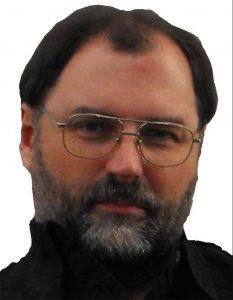
Derek Jones was a Notion fan, expert user, and PreSonus advocate who formerly managed the Notion Users Facebook Group. If you ever had a run-in with Derek on-line, it was guaranteed to be positive—we can’t even begin to count the number of people in the Notion community who benefitted from his help and patience. If you count yourself among them, please feel welcome and encouraged to say something nice in the comments.
Rest easy, Derek, and thanks for your kind time and attention. You’re already missed.
The Notion team are deeply saddened by Derek’s passing. He was hugely valued here, indeed all of our users benefited from the improvements and feedback he contributed over the years on top of the direct help he gave to users within the Notion user group he created. The hundreds of members that built up over time became a really supportive and kind online community, aided of course by Derek’s patient and positive direction. I remain very grateful for his passion for music making, and for his friendship.
Chris Swaffer
Product Manager, Notion
Jonny Lipsham Studios
Studio One in the City of Angels with Josh Cumbee!
If you’re not following PreSonus on Instagram, you’re missing out!
We post the latest things going on around the office, photos of our products in action, reviews, and we also connect with our users one on one. Most recently we connected with Singer/Songwriter/Producer Josh Cumbee from Los Angeles, CA. Josh is a diehard Studio One fan, and often shares his expertise with his Instagram following, and we are quick to share. We took the opportunity to talk to him more about his craft, Studio One, and what’s on the horizon for him.
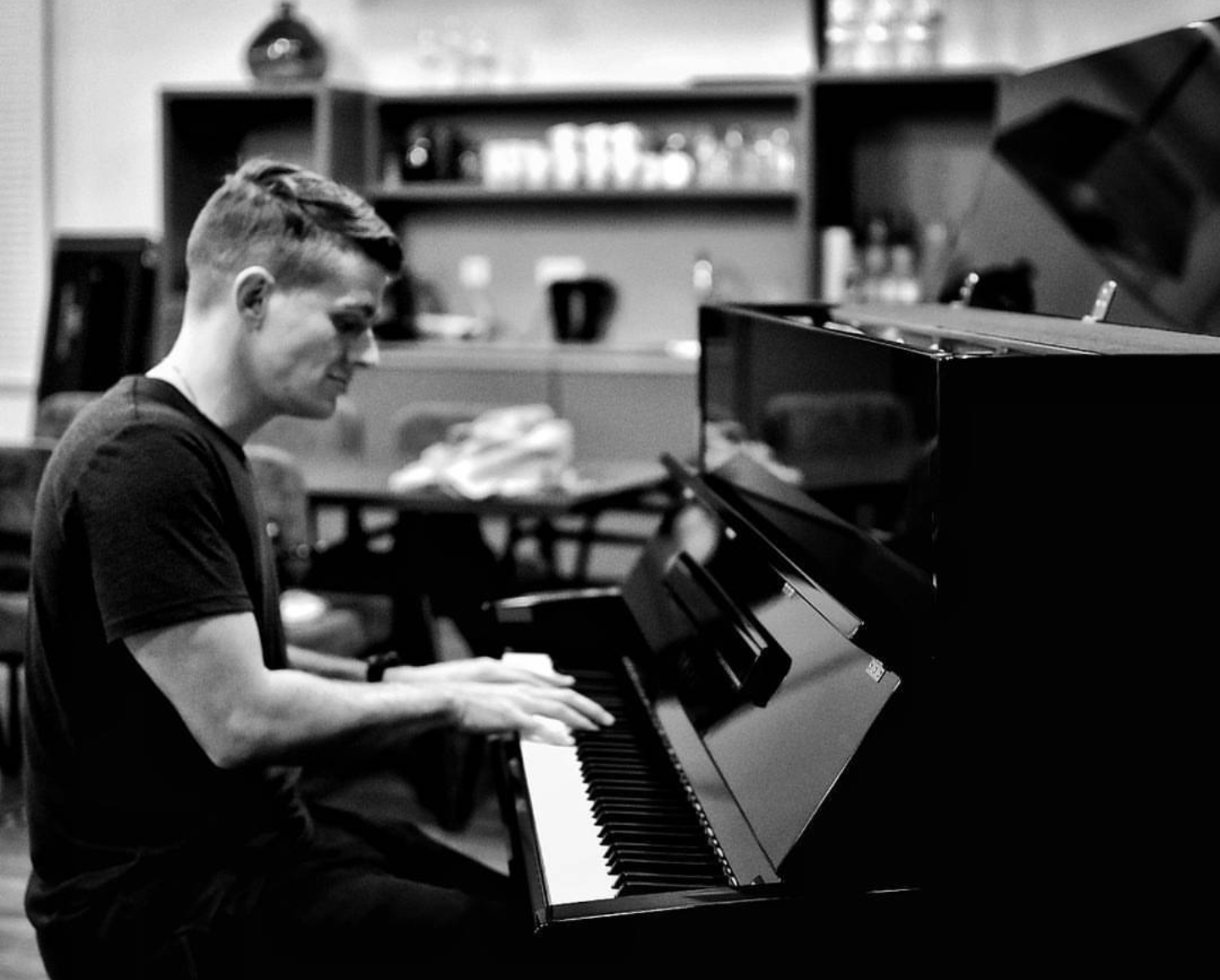 Give us some background on yourself. How long have you been making music?
Give us some background on yourself. How long have you been making music?
Fully professionally, it has only been about 4 years—that was the first time a song came out with my name in the credits where I had to pinch myself. I had been playing piano and guitar since I was a kid, which drew me to USC for their music business degree as I figured there was no way to make the creative side into an actual job. I started moonlighting with composing for TV backing tracks concurrently with my day job—a couple twists of fate, a lot of hard work, and a few key helping hands later and it blossomed into a full-time profession.
What do you like about PreSonus?
PreSonus to me exemplifies accessible, no-compromises quality. With a lot of brands in the audio space, you either have to shell out a lot of hard-earned cash to get a high-end product, or the budget product sounds/feels/functions like a cheap imitation of the real thing. To me, Studio One is a top-shelf program that I’d be willing to pay a lot more forthe fact that it’s priced low enough for me to recommend to my peers, shoot, even my little brother who’s getting into making music… now, that’s cool.
What PreSonus products do you use?
I’m a die-hard Studio One evangelist. I also have a tried and true Central Station in my studio that I’d guess has been rocking for a solid 400 years at least.
Describe the first time you wrote a song? Produced it?
I’m not even sure what the first song I wrote/produced would have been… but it was probably done on the ridiculous combination of Sony Acid 3 and a four-track Tascam tape recorder I stole from my dad’s electronics drawer. It was generally a misshapen cacophony of loops, poorly played guitar and tape hiss until I got into Garageband a while later in high school.
When did you first hear about Studio One?
A great producer from Nashville mentioned it to me. Pro Tools was the first serious DAW I learned, which I promptly abandoned for Logic because at the time working with MIDI was extremely difficult in PT. I had spent several years in Logic, but the updates (particularly in the GUI department) personally didn’t jive with me. Studio One was there in my moment of software weakness, and became one of very few tools I feel like I can’t live without.
What features are you most impressed with in Studio One?
Working with audio is a dream in Studio One. It is so easy to render, stretch, pitch shift, chop, Melodyne, change the BPM of the whole song at the drop of a hat… you name it. VST3 integration is a great CPU saver. The dual buffer is genius. Shout-out to those string samples. And Fat Channel. OK, someone stop me…
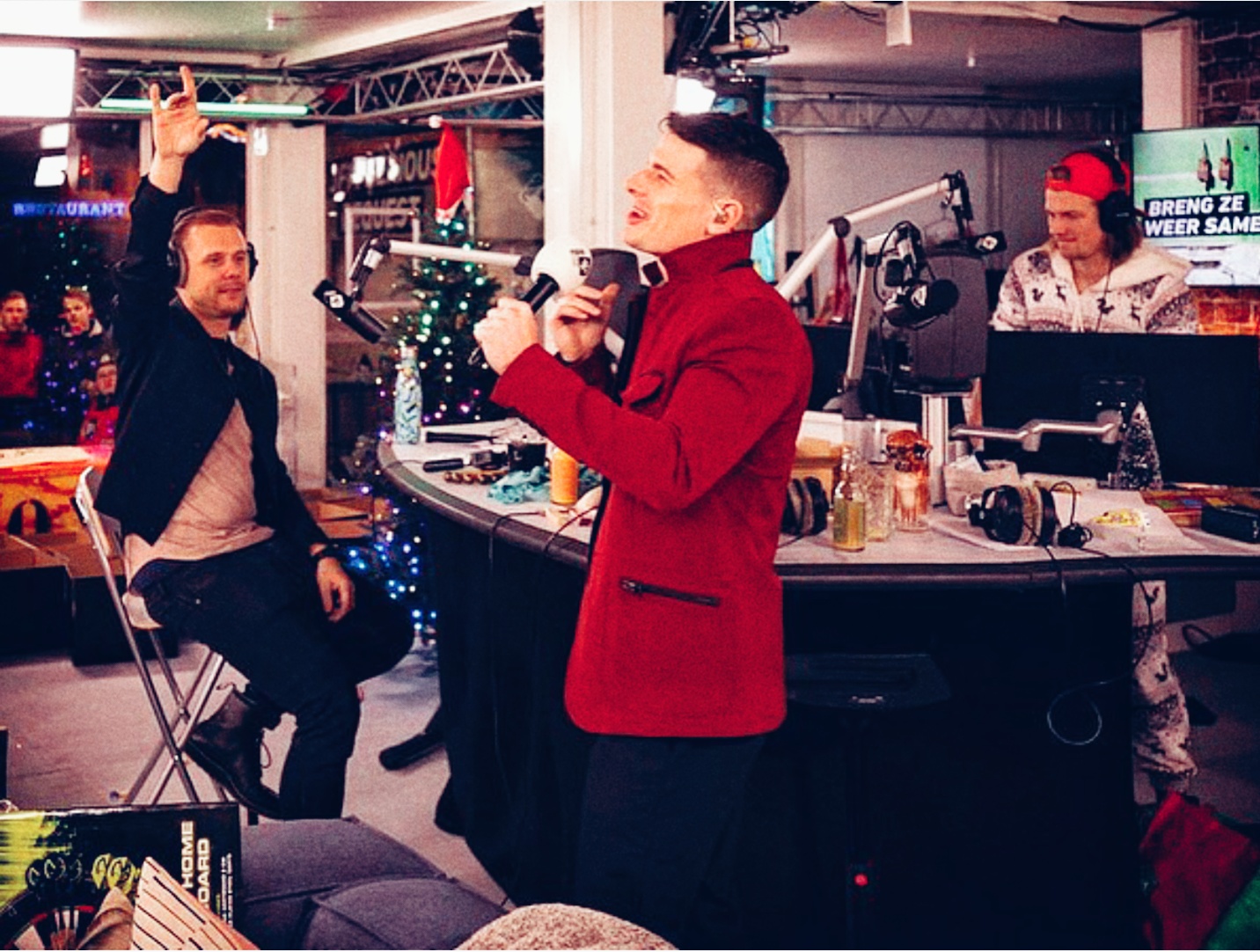 Any user tips or tricks or interesting stories based on your experience with Studio One?
Any user tips or tricks or interesting stories based on your experience with Studio One?
With the stems feature being as rock solid as it is, I am a big believer in setting up your template with stems in mind—that way you learn to work within that structure and if/when it comes time to export them for a collaboration, mixer, delivery, etc., you can really take full advantage of Studio One’s built in set up for that. I think everyone should at least know how to use the routing feature in the channel editor—you’ll be surprised when it might come in handy. If you’re a Logic refugee you can bring all the .SDIR’s from Space Designer into Open Air AND the .EXS instruments into Presence, which is great if there’s sounds you just can’t let go of. Also, I built a macro that removes all unused audio files, copies all external ones to the session folder, then saves it—highly recommended. Big fan of VST3’s, they’re way easier on your CPU and cross-platform compatible if you need to move a session across OS’s.
How easy/difficult was Studio One to learn?
It’s a great cross between almost every DAW; mix window feels like PT, main window reminds me of Logic, arranger functions feel like Ableton… sort of all the best parts of each plus some sauce all of its own. Porting and recreating my key commands was a hassle, and the depth of sub-menus can be a little intimidating at first. There’s a lot of genius features but sometimes you have to dig for them! So all that to say, easy at points, hard at others, worth it… 100x over.
Where’d you go for support?
Where else? Straight to the support ticket portal (once I have exhausted the forums of course).
What features do you want to see next in Studio One?
MIDI capture to complement the existing armed audio track capture feature. Mid-side mode for pan knobs. A native Auto Tune competitor for when I’m too lazy to tune backing vocals in Melodyne. Native WASAPI driver for Windows similar to FL Studio’s (which rocks). More control over multicore/threading. Dare I say… integration with UAD Hardware monitoring just to have the option.
Any other thoughts on Studio One?
Of course, if I were starting to make music now, knowing what I know, I’d definitely start with Studio One. But personally, having to start over in a new program proved an even greater gift for my creative process. It made me rethink all of my go-tos, presets, channel strips, templates, etc., even a preference to MIDI over audio or vice versa. Of course, you get set back a week or two in productivity as you’re relearning everything, but that process of education at this stage in my career definitely took the music to the next level for me. I’d recommend it no matter how entrenched you might be in your program of choice, even if just for that.
Recent projects? What’s next for you?
Just co-wrote and produced on Adam Lambert’s latest single, Feel Something (about which I’m very excited), and also a single for a band called Flawes entitled Don’t Count Me Out that I feel really jams. I’ve got a couple other things cooking as a writer/producer that I’m stoked on but my baby is definitely my artist project, for which I’ve written and produced an album on the heels of a feature with Armin Van Buuren that did pretty well. We have an upcoming feature slated (so excited) and going to start rolling out tracks as a solo artist this year once the partnership side is finalized.
Hay Bale Studio Relies on StudioLive 32 and Studio One at Bonnaroo
Most of time, you can find Elijah “Lij” Shaw at his Toy Box Studios in Nashville,
where the Grammy Award winner engineers and produces projects in a wide variety of musical genres. But every year, when the Bonnaroo Music and Arts Festival rolls around, Shaw and his team decamp for Manchester, home of the festival. There, behind the main stage, they soundproof their double-wide mobile recording trailer with 500 hay bales.
In this once-a-year Hay Bale Studio at Brigadoon—er, Bonnaroo—Shaw and his team record dozens of bands that will appear at the festival. The performances are fed to more than 40 radio markets around the USA.
For the 2017 Bonnaroo, Hay Bale Studio offered more capabilities than ever before, as Shaw mixed on the new PreSonus StudioLive 32 Series III digital console/recorder, while his team captured the tracks and main mix in PreSonus’ popular Studio One 3 Professional DAW.
“The StudioLive 32 allowed us to bring in all 24 inputs from the recording floor, so we could record a full band. We’re recording in multitrack to Studio One using the console’s AVB audio interface, which can send and return up to 55 streams over one CAT5 Ethernet cable,” says Shaw.
Shaw mixes live while the band is performing, a job made much easier by the StudioLive 32 Fat Channel signal-processing section’s customizable user interface. “I’ve got compressors and EQ on every channel,” Shaw specifies, “and the customizable Fat Channel lets me create my own layout so I can quickly access the processing I want when mixing. I can bring in four onboard effects processors for reverb and delay, and I also patch in my outboard spring reverb. I use Tap Tempo on the mixer to ensure the timing of the delay effects works with what the band is playing.”
PreSonus’ FlexMix feature also has proven useful. “I choose a FlexMix, and the entire mixer configuration changes and shows me what’s going on with that FlexMix,” instructs Shaw. Using the StudioLive 32’s aux sends, Shaw and team send four custom headphone cue mixes. “We send the cue mixes to the PreSonus HP4, which is a great, simple 4-channel headphone box that is really loud,” he avers. “We have two people with iPads running UC Surface software to control the monitor mixes.”
Main engineer Michael Hardesty also is equipped with UC Surface but he’s running it on a laptop. “Anything Lij can do on the mixer, I can do just as well in the software. My main goal is to set preamps and compressors and do the gain staging so I can get the multitrack feeds recorded properly in Studio One. I am also taking a print of the mix but generally I’m working with individual tracks. I also help with headphone mixes,” Hardesty observes.
With UC Surface, it’s possible to control the mixer from multiple devices at the same time. “That means you can give people different responsibilities,” Hardesty explains. “You also can lock out functions on particular devices; the iPad guys on the recording floor can only control the aux sends for the headphone mixes, while my laptop has complete control of the StudioLive 32.”
The live stereo mix goes straight to mastering engineer Joe Hutchinson. “Joe makes the radio mix sound fantastic,” enthuses Shaw. “He also uses Studio One to capture the performance in stereo. So we’re capturing bands through the StudioLive 32, mixing and mastering, and putting it out to more than 40 radio markets—all within an hour of each performance, with two or three songs for each band every hour.”

Thanks to the feature-packed, versatile StudioLive 32 and the power and speed of Studio One, Hay Bale Studio had entirely new capabilities at the 2017 Bonnaroo. “The customizable mixing surface, plenty of processing, wireless remote control, recording features, and ease of use let us do things we could never do at a dozen previous Bonnaroos,” confirms Shaw, “and it all sounded great. “We loved using the StudioLive 32, and we’re very happy with Studio One. Bonnaroo is a highlight of our year, and PreSonus helped make it extra special this year. We hope you’ll visit our site and check out some of the recordings!”
Watch Lij demo and show off their StudioLive 32 here:
For more information about Hay Bale Studio, please visit www.thetoyboxstudio.com/haybalestudio
Listen to their latest podcast from Bonnaroo HERE!
For more information about PreSonus, the StudioLive 32 console/recorder, Studio One 3 DAW, and the HD4 headphone amplifier, please visit www.presonus.com.
Photography provided by Anthony Matula with MA2LA Design.
Join PreSonus at Messe in Frankfurt, Even from the Comfort of Your Own Home
For those of you in the USA wondering what Musikmesse is, think NAMM—but in Germany.
“Musikmesse in Frankfurt is the international trade fair for instruments, sheet music, production, and marketing.” It all starts this Thursday, April 7 and runs to Sunday, April 10.
The PreSonus team will be there. Visit our booth and be one of the first in Europe to see the new Studio 192 Mobile and ULT Speakers in person! Find the PreSonus booth located at Hall 9.1 Booth F41.
At our booth, participants are invited to check out the gear, connect with us on social media, and enter to win one of five copies of Studio One Pro we’ll be giving away every day of Messe! To enter, participants must:
- Take a picture in our social corner–the orange corner in the photo above
- Post the photo to their social profiles and include the hashtag #StudioOneMesse.
- We will randomly select winners and will contact them directly. Follow #StudioOneMesse to see what PreSonus users are up to at the show and to congratulate the winners!
- Follow #StudioOneMesse
- Follow Musikmesse on Facebook.
- Follow Musikmesse on Twitter
- Follow Musikmesse on Instagram.
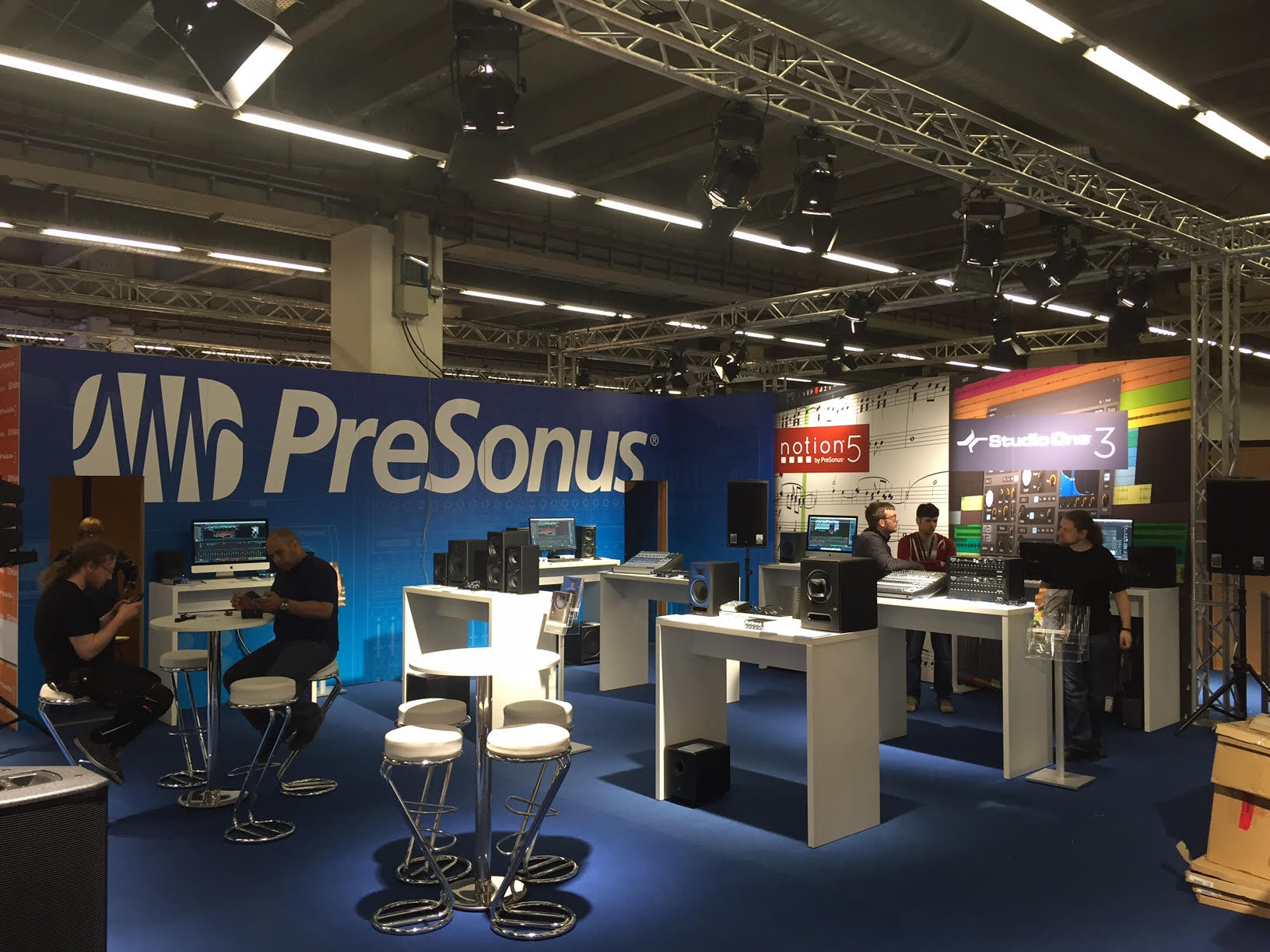
Support an Important Cause with @NothingMoreRock #IKnowJenny
Heya! Check out the deeply personal and incredible new video from Nothing More for “Jenny.” But more importantly, check out the cause. First, here’s the video:
Next, here’s the cause: Nothing More is looking to raise awareness of mental health challenges through partnerships with PledgeMusic, BringChange2Mind, The Jed Foundation, To Write Love On Her Arms, YoungMinds, and the International Bipolar Foundation.
You can support these charity partners and pick up some cool exclusive merch at the #IKnowJenny page on PledgeMusic. Click the image below to
Winter Wonderland Raises Money for UNICEF
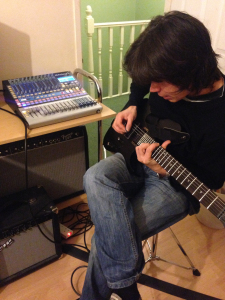 iginal Christmas music. 100% of the proceeds from the album will be donated to children’s rights nonprofit UNICEF.]
iginal Christmas music. 100% of the proceeds from the album will be donated to children’s rights nonprofit UNICEF.]
Diego #GotHisHooksIn in the best way possible
As you may or may not know, we recently had a big hook-writing contest called #GetYourHooksIn, which put up the offer of an incredible recording package in exchange for a good hook. Diego entered said contest and placed third.
That said, Diego—more than any of the 300+ entrants—deserves an honorable mention. He chose to not only write and record his hook to enter the contest, but also to document every step of his process, and make the whole thing available on YouTube, for free, for the betterment of producers the world over. He covers several important topics that stand apart from the run-of-the-mill YouTube world of mixing, EQing, compression, etc. Instead, Diego focuses on topics like lyric writing picking the right singer for the song, and the importance of the first listen.
Check out the playlist below, as there’s clearly been a lot of time put into this and there are some wonderful tips in here. English speakers can turn on subtitles by clicking the CC button near the bottom right of the video player.
Here’s is Diego’s final entry:
If you’d like to hear the winning entries of #GetYourHooksIn, click the following links:
30 Day Worship Sound Tools #23: Tips for Recording 1
Doug Gould of WorshipMD suggests some handy tips for recording your services.
For info on the StudioLive AI digital mixers, click here.
For more from Doug Gould and Worship MD, click here.
